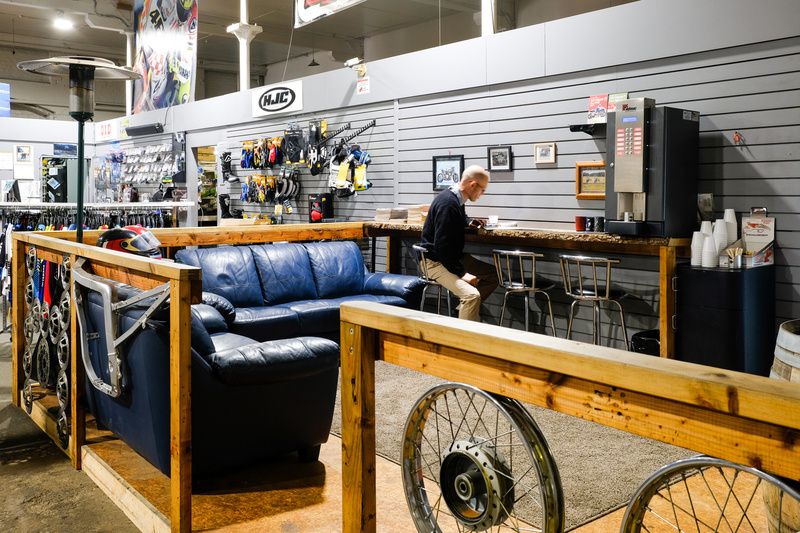Grasping Bike Gears: How to Maximize Your Riding Experience
In the realm of motorcycling, understanding the art of gear adjustment is vital for enhancing your riding efficiency. Effectively comprehending and making use of motorbike equipments can substantially influence gas, control, and velocity performance, transforming a typical adventure into a seamless, electrifying journey.
Comprehending Equipment Mechanics
At the core of motorcycle characteristics, equipment auto mechanics play a critical role in transforming engine power right into activity, eventually dictating speed and control. The equipment ratios, meticulously created, figure out the relationship in between engine changes and wheel turns, affecting velocity and gas effectiveness.
Understanding gear mechanics begins with identifying the relevance of the gearbox, which houses numerous gears of varying dimensions. These gears connect with a process called meshing, where teeth of different equipments engage to send power. The precision of this interaction is crucial; any kind of misalignment or damages can result in ineffective power transfer, impeding efficiency. Furthermore, the setup and size of equipments influence the motorcycle's ability to manage various tons and rates.
Furthermore, the idea of equipment shifting is important to optimizing performance. Smooth and timely changes ensure that the engine operates within its optimum power band, preventing unnecessary stress and boosting longevity (motorbike shop). By understanding these mechanical intricacies, bikers can accomplish an unified mix of control, power, and effectiveness, boosting their riding experience
Timing Your Changes
Change timing proficiency is essential for optimizing motorbike efficiency and improving the riding experience. Effectively timed changes make certain that the engine runs within its optimum power band, which is crucial for maintaining control, achieving smooth acceleration, and ensuring the longevity of the motorcycle. Bikers should develop an intuitive sense of when to change equipments, which entails recognizing the relationship between engine transformations per minute (RPM) and speed.
To master change timing, pay attention to the engine's noise and feel, as these offer vital ideas concerning when to transform gears. When the engine approaches the upper array of its power band without getting to the redline, the suitable shift point commonly occurs - motorcycle shop. Changing as well early can lead to an absence of power, while moving too late might trigger unneeded engine stress
Additionally, roadway conditions and riding design impact shift timing. For example, in urban setups, smoother and a lot more frequent shifts might be required to browse web traffic efficiently. In comparison, during freeway riding, fewer shifts at greater speeds can be extra proper. Exercising in different settings will boost your ability to time changes precisely, eventually boosting your riding experience to a professional degree.
Enhancing Gas Performance
While mastering motorbike equipments is crucial for efficiency, boosting gas efficiency is just as important for both ecological and economic reasons. Optimum fuel consumption not only minimizes functional costs but likewise lessens the ecological footprint of riding. To attain this, one must recognize the detailed connection between gear choice and engine performance.
Riding in a greater equipment at reduced speeds can lead to engine hauling, which is destructive to both gas economic situation and engine health and wellness. On the other hand, riding in lower gears at high rates results in unneeded fuel consumption.
Additionally, regular upkeep plays a crucial function in fuel efficiency. Ensuring that the bike is well-tuned, with tidy air filters and correctly blew up tires, can lower and boost the rules of aerodynamics fuel wastefulness. In addition, taking on a riding design that embraces steady velocity and smooth deceleration can add to much better gas economic climate.

Methods for Smooth Transitions
Achieving smooth gear changes is essential to enhancing the riding experience and making sure the longevity of a bike's transmission system. Proper equipment moving not just adds to a smooth ride yet also lessens wear and tear on the mechanical elements. To understand the art of smooth shifts, riders have to concentrate on a couple of key methods.

Secondly, clutch control plays a critical duty. Engaging and disengaging reference the clutch smoothly requires method. The clutch bar must be launched progressively, allowing for a seamless transfer of power from the engine to the wheels without causing a jolt or abrupt motion.

Adjusting to Road Conditions
Browsing varied roadway conditions is a vital skill for any motorcyclist aiming to keep control and safety and security. Whether you're riding on damp surfaces, gravel roads, or browsing doglegs, your capability to adapt your equipment use and riding method is critical. Understanding just how to readjust your gears appropriately can significantly impact traction and security, making sure a much safer journey.
On damp roadways, Homepage it is recommended to maintain greater gears to reduce torque and decrease wheel spin. This strategy aids preserve grip on unsafe surfaces, permitting smoother velocity and deceleration. In comparison, when riding on gravel or irregular terrain, reduced equipments are preferable. Lower gears supply far better visit this site right here control and enable you to react more swiftly to unforeseen changes in the roadway surface.
Sharp curves require precise gear monitoring to stabilize speed and control. Downshifting prior to entering a curve can aid maintain momentum while making certain the motorbike continues to be secure throughout the turn. Constant practice in different problems boosts your ability to respond and anticipate to adjustments in roadway texture and incline.
Final Thought
Understanding motorcycle gears substantially boosts the riding experience by improving control, acceleration, and gas performance. A comprehensive understanding of gear auto mechanics and exact change timing ensures the engine operates within its optimal power band, while smooth transitions with efficient clutch and throttle control boost comfort and performance. Adapting gear choice to different roadway problems, such as utilizing greater equipments on wet surfaces and reduced equipments on crushed rock, more boosts handling and safety and security. Inevitably, these abilities boost the total trip.
Understanding equipment technicians starts with acknowledging the significance of the transmission, which houses numerous gears of varying dimensions. These gears interact via a procedure understood as meshing, where teeth of different equipments engage to transfer power (mx parts nz). Gentle changes to the throttle during equipment shifts can prevent jerky activities and preserve a consistent riding rate
Whether you're riding on wet surface areas, gravel roadways, or navigating sharp turns, your capacity to adapt your equipment usage and riding technique is extremely important. Adapting equipment choice to various road problems, such as utilizing greater equipments on wet surfaces and lower equipments on crushed rock, further enhances handling and safety and security.